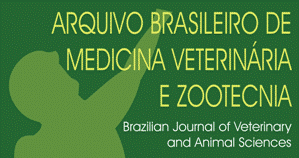RESUMO
O objetivo foi avaliar os efeitos do cranberry nos parâmetros sanguíneos e urinários de cães (experimento I), na digestibilidade dos nutrientes (experimento II), na palatabilidade da dieta (experimento III) e a influência do cranberry sobre E. coli UPEC-MRHA fimbriae in vitro (experimento IV). Para os experimentos I e II, 10 cães foram alimentados com dietas contendo 0% ou 0,4% de cranberry por 30 dias. O experimento III comparou as dietas contendo 0% e 0,4% de cranberry usando 16 cães adultos. Não houve diferenças estatísticas (P>0,05) nos parâmetros sanguíneos avaliados. Cães que consumiram cranberry apresentaram cor e aparência mais claras da urina, em comparação com o grupo controle (P<0,05). A dieta contendo cranberry apresentou maior digestibilidade da matéria seca, extrato etéreo, matéria orgânica, maior energia metabolizável (P<0,05) e menor concentração de ácido siálico fecal (P<0,05) comparada à dieta controle. Não houve influência do cranberry na formação de fímbrias de E. coli UPEC-MRHA. Houve uma menor taxa de ingestão da dieta contendo cranberry (P<0,05). A inclusão de 0,4% de cranberry aumenta a digestibilidade dos nutrientes, influencia a cor e a aparência da urina dos cães. No entanto, reduz a palatabilidade da dieta e não altera a adesão de E. coli UPEC-MRHA in vitro.
Palavras-chave:
antocianidinas; alimentação funcional; cistite; mirtilo-vermelho; nutracêutico; infecção urinária
